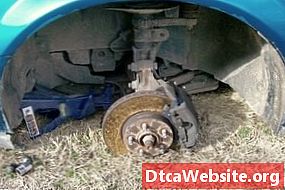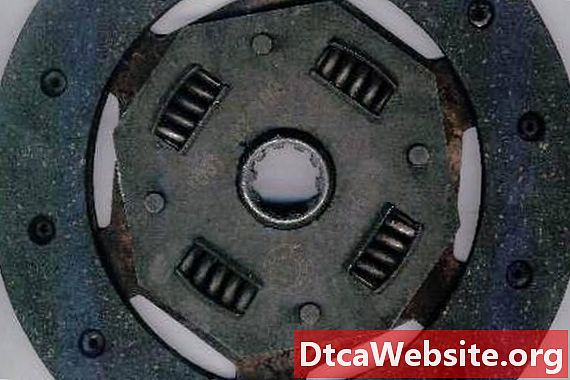
Contenu
A cars air conditioning compressor can fail due to a lack of lubricant or a mechanical issue, and a broken compressor usually will have to be replaced. Checking for a broken compressor involves using ultraviolet dye and a black light, and some simple observational skills. The average backyard mechanic can diagnose a compressor in about an hour.
Step 1
Check for the compressors operation when turning the interior climate controls to the A/C setting. This should kick the compressor on with a sound, and the engine should change in pitch to the compressors added draw. If the compressor does not kick on, there might be an electrical issue preventing it from doing so. Check the electrical wiring harness adapter plug at the compressor for looseness or disconnection, and reconnect it if required. Check the primary and secondary fuses at their panel locations (typically on the drivers side kick panel and on the drivers side fender), and replace any that are blown. If there are blown fuses, there probably is a reason; check the compressors mount bolts for tightness, because these are also the units ground posts.
Step 2
Add an ultraviolet dye to the system, and check it for leaks by using a refill kit and a can of UV dye. Most dyes will have a small amount of lubricant in them, and that might quiet a noisy compressor. The dye is added by turning the can into the valve kits lower screw extension in a clockwise direction until the valve needle punctures the can and pressurizes the valve. Attach the valve nozzle to the low side of the A/C system, typically at the evaporator. Start the car and turn the A/C setting to maximum, and pull the trigger on the valve. The vacuum of the system will draw the dye into it. When the can is empty (about five minutes), turn the car off, disconnect the nozzle, and remove the can from the valve. A second can of lubricant or dye can be added, if the compressor is excessively noisy.
Step 3
After running the air conditioning for a few trips, check the compressor with a black light in a darkened environment. The dye will glow a bright green where it leaks from the system. Check around the line connections to the compressor, which have gaskets in the line nuts that are prone to failure.
If the dye shows no leakage, and the compressor kicks on but a loud squealing sound is heard or smoke erupts from the compressor area, the problem could be a malfunctioning clutch assembly. Older-models clutches can be rebuilt, but for smaller economy cars it might be less expensive to simply purchase a new compressor entirely. The broken clutch will be painfully obvious: The compressor will not spin while the primary drive belt attempts to make it spin. The result is belt damage because it is run around a fixed wheel that will not turn, burning the belt material. Once the compressor is replaced or the clutch repaired, check the belt for damage.
Tip
- Freon does not go "bad" or spoil. The most common cause of freon loss is a leak.
Warning
- Use extreme caution when working with freon. It can freeze skin in seconds.
Items you will need
- Freon recharge kit (valve, trigger, nozzle and optional gauge)
- Can of UV dye
- Can of lubricant
- Black light


